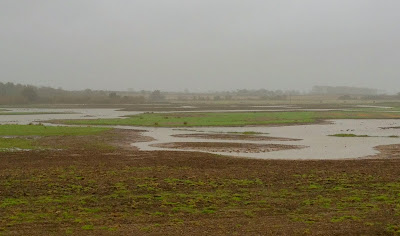The occasional trip abroad is a perk for the over-worked, under-paid ecologist. Cyprus was the venue for the latest jaunt, with the only hardship being the preparation and delivery of a presentation on the management of coastal lagoons. On the up-side - hearing about projects across Europe, in Spain, France, Slovenia, Greece and of course Cyprus, the ouzo, meze, and a quick tour of some of the key birding sites on the island.
Akrotiri Lake was much as I remembered it from 30 years previously - a shrunken, distant, heat-hazed wetland with thousands of pinky-flamingo-shaped-shapes. The scruffy pools behind Lady's Mile Beach at Zakaki were still good despite some on-going works around them and offered up Citrine Wagtails, Bluethroats, White Pelican, Penduline Tits, Red-footed Falcon and a selection of waders.
The muddy margins of Akhna Reservoir looked good, but heavy disturbance by fishermen and shooters left it virtually bird-less and disappointing. 50+ Spur-winged Plovers was the highlight. By contrast, the undisturbed airport treatment lagoons held many birds; lots of Shoveler with some Teal and Garganey, a good variety of waders including Marsh Sandpiper and a couple of Whiskered Terns. Loafing large gulls allowed a leisurely ID comparison of mixed flocks of Yellow-legged, Armenian, Caspian and Baltic Gulls. At least 40 Red-throated Pipits grovelled and pssseeii-ed around the margins, along with a couple of Black Francolins.
John was desperate to re-live his clubbing days at Aya Napa but luckily we overshot to Cape Greco. Some continuing migration was evident by the regular flocks of bugling Common Cranes passing overhead. BOPs were also on the move, with Short-toed Eagles, Sparrowhawks and some distant ring-tail harriers. Cyprus, Sardinian and Spectacled Warblers scuttled around the sparse bushes and we finally managed to dig out a couple of the wintering Finsch's Wheatears.
Pics - Spectacled, Finsch's, Baltic, Armenian, Caspian, Cranes and Short-toed Eagle.









